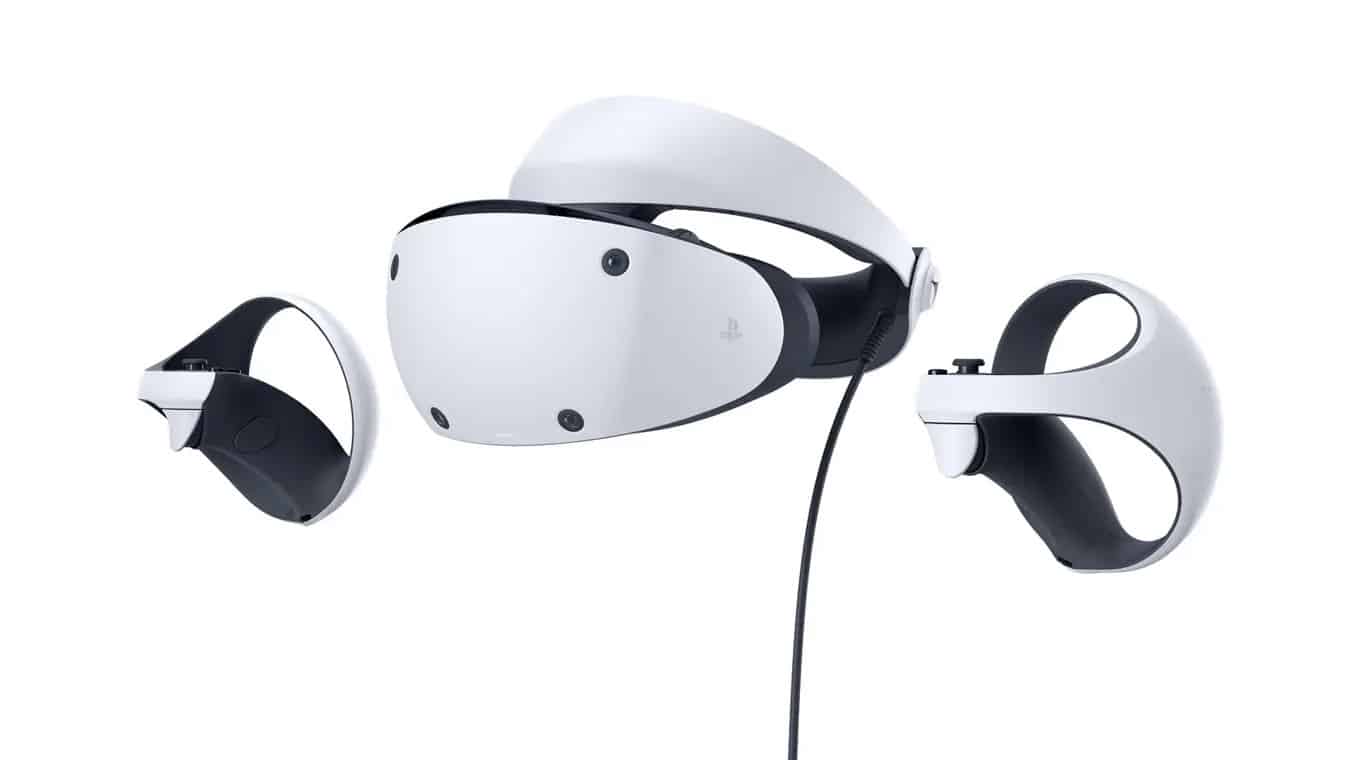The first time I tried on the original PlayStation VR headset, I lasted a good 15 minutes before I needed a lie-down. Walking in Skyrim VR made me physically ill, with a combination of swift movement and teleportation making my eyesight blur and my stomach drop. It’s something I should’ve expected, as a motion sickness sufferer. I can’t read in the car, play games on the bus, or focus on anything other than the world outside the window – and that’s been the case my whole life. It wasn’t something I’d considered in my purchase, however, and it was painful enough that my PSVR wound up gathering dust. I can see that changing with the PlayStation VR2.
In nearly every way, this VR headset is an improvement on its predecessor. Comfort-wise, it remains heavy – it leans on my brow in a way that causes a soft divot with every use – but many of my complaints with the original PSVR have been addressed in this iteration. It’s much better vented, for one thing, and doesn’t feel nearly as hot. Where it rests on my head alleviates pressure on the temples, so it doesn’t cause headaches, and it also avoids the ultra-sensitive crown region of my head, which is a particular relief.
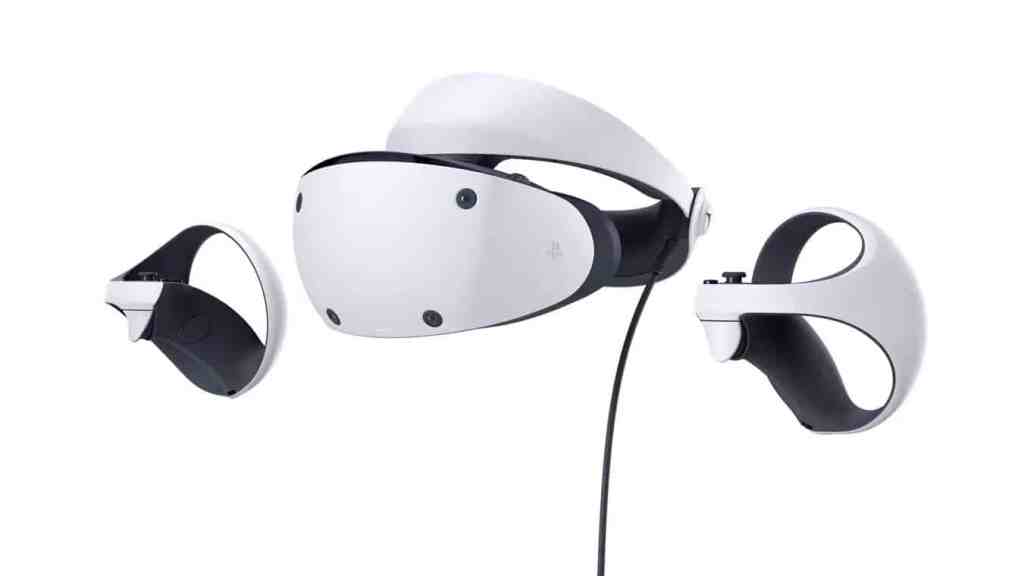
When developing the PSVR2, it’s clear that Sony looked to complaints about its predecessor, as a checklist of concerns have been effectively ticked off in this unit’s new, more lightweight design. As an aside, it also looks considerably less goofy – and an easy on-off button for its display makes it a more practical and easily used device.
That’s not to mention the cable system, which has been transformed into an easier plug-and-play system, rather than the original PSVR’s tangle of cable-box-cable set-up that required multiple pages of a manual to get through.
This go around, you simply plug it in, pop on the headset, adjust the strap, and you’re good to go – and this is the least of the PSVR2’s essential improvements.
After all, a good VR headset is only as good as its games library.
Read: PSVR2: The 10 best games for PlayStation VR 2
While the PSVR2 is currently struggling with a slim lineup of titles, the experiences available are strong. They show off the vast potential of VR games, but also demonstrate that VR developers are learning more about the importance of comfort and practicality in play.
Focus in all things

During the PlayStation VR era, there was a sense that VR games could be anything – and that led to a raft of ambitious titles that, frankly, were joyless to play. Skyrim VR was exciting in concept, but personally, it wasn’t a game I could comfortably play. Headaches, a sinking gut feeling, and blurry eyes sunk my fun. It felt like a game too early for its technology.
Batman: Arkham VR was bursting with brilliant ideas, but similarly caused me stress headaches – and not just in the final stanza’s terrifying prison scene. Iron Man VR – same deal. Blood & Truth was similar.
PlayStation VR2 feels like a necessary step back from these experiences. Rather than focussing on large-scale adventures where players are literally swept off their feet into new and overwhelming worlds, the games lineup for PSVR2 offers more stationary, thoughtful experiences that feel accessible for everyone – but particularly motion sickness sufferers.
Take Kayak VR: Mirage. This simple, beautiful adventure game allows players to sit in a central location, with a focal point (the kayak tip) that remains still. In drawing the eye towards a balanced centre, it becomes much easier and more comfortable to explore its world. Rowing is also smooth and steady, reducing the shocking jumps and shakes which can often bring you right out of a VR world.
With a focus on stillness, Kayak VR: Mirage is an accessible ride – but one that still provides a great degree of tactility, and a great sense of wonder as you dive in deep into its many courses.
Demeo utilises a similar technique to provide an engaging, headache-free experience.
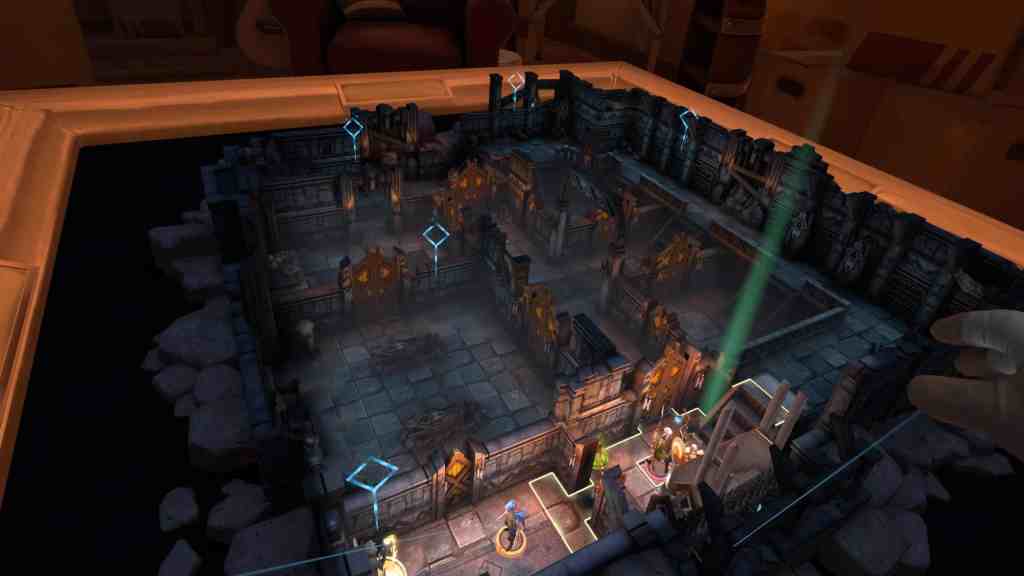
In this virtual tabletop simulator, you are a player hanging over a Dungeons & Dragons-style board game set-up, which functions as the focal point of the action. You can move within this space using the PlayStation VR2 Sense controllers, but only in small increments.
With the game’s action taking place only on the table, Demeo uses its VR world as a means to create atmosphere and focus. The tabletop becomes your entire world, as an orchestral soundtrack plays out. It helps form a connection between yourself and the game’s pieces, evoking quiet afternoon dungeon crawling with friends.
Its vast array of story adventures may play out in static movements of digital figures, but it remains a transportive experience thanks to the structure and style of the game. Not all VR games need active movement to be engaging, and both Demeo and Kayak VR: Mirage are good examples of how stationary VR experiences can still create an engaging and tactile environment to play around in.
Tentacular VR is an extension of these ideas – and also, one of the best all-rounder PlayStation VR2 games.
The Beauty of Tentacular
In this physics-focussed puzzle game, you are a towering kaiju beast with sucker tentacles for arms. Your tiny town barely contains you – but you are not a malevolent creature. Rather than leaning into destructive kaiju tropes, you use your strength and height to solve puzzles for your neighbours, using your tactile arms to build great structures.
Read: Tentacular (PSVR2) review – Slippery little sucker
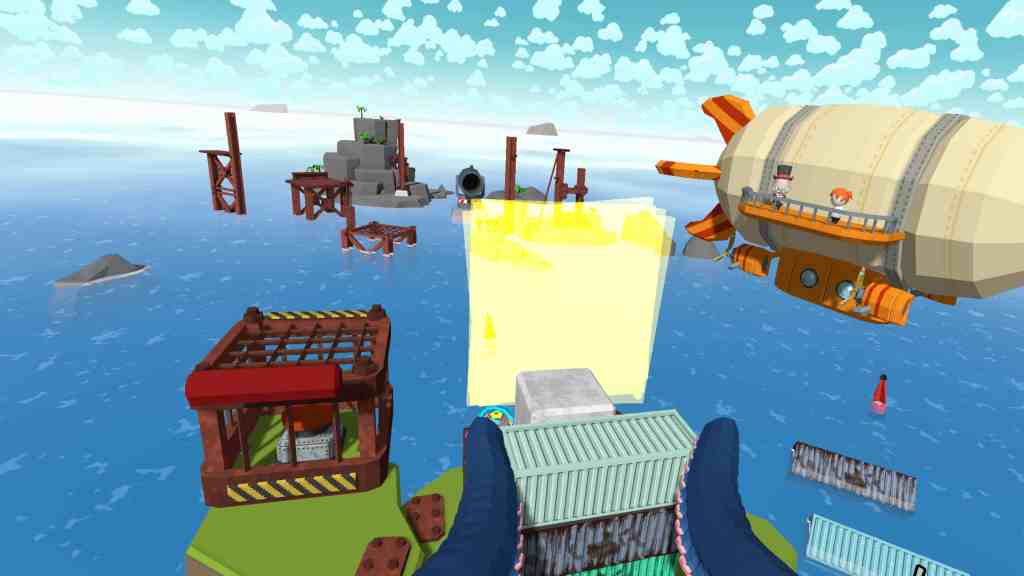
As in Demeo and Kayak VR: Mirage, your movement in this VR world is based on a sturdy, central focal point. It’s a bit freer, in that you can move about on your own whims, but puzzles tend to be centred and on a solid platform, allowing your eyes to adjust on the problem, and on potential solutions.
Your arms also serve as grounding objects that remain steady as you wander.
Moving around may yield new items and previously unseen secrets, but the actions you perform are usually based on looking around, reaching, and experimenting with what’s directly in front of you.
Grab a nearby power pole and a sticky ball, and you can form a makeshift slingshot. Balance shipping crates in a tower, and you can build a hyper-powered defence against enemy attack. These are surprisingly complex tasks, but made easily accessible as developer Firepunchd has effectively built its world with stillness in mind.
The only headache-inducing part of the game is trying to figure out how to attach an engineer onto a rocket, and send it spinning away from the Earth.
The mountain calls
Beyond these more grounded experiences, the PSVR2 also plays host to a handful of larger and more ambitious worlds, with Horizon Call of the Mountain being a flagship game for the headset. While it would be easy to assume this game falls into the same traps as Skyrim VR, with a focus on a dazzling, high concept world – it’s a distinct step up, most notably in its pacing.
While the game has been criticised for including far too much climbing – you’ll spend the vast majority of your time with ice axes in hand – this mechanic is handled well, with a rhythm that allows you to take your time, and advance at your own pace. With each hand hold or hook of a mountain, you’re able to drag yourself up inch-by-inch, pulled along by a sense of physical achievement.
Read: Horizon Call of the Mountain PSVR2 review
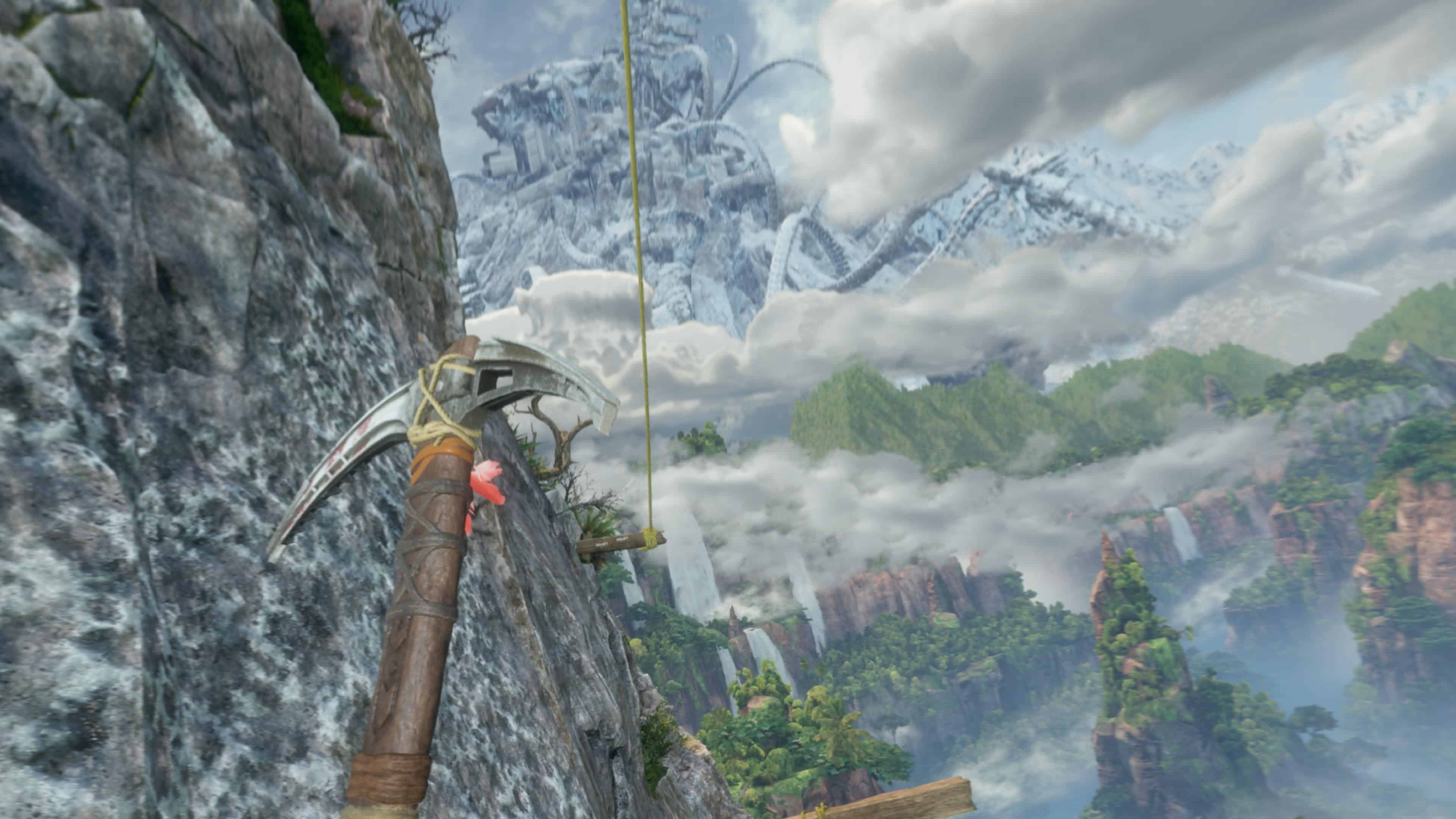
Each climb is punctuated by segments of action, where you might fling yourself across a ledge or duck to attack a beast, but these moments are aided by plentiful comfort settings that allow you to adjust the game to your needs.
When the action speeds up, a vignette curtain can descend to block off any distractions and allow your eyes to focus on the task at hand. Time slows down for jumps and monster attacks, allowing time for effective planning, and keeps your brain at pace with the action.
For me personally, my motion sickness tends to kick in when the action moves too fast, or when it contradicts my position in real-life – for example, if I’m standing still, and the VR world is racing around me. The confusion really gets to me, and makes me feel hot, bothered, and occasionally, ill.
Horizon Call of the Mountain effectively avoided that with its comfort settings, and allowed me to play through the entire adventure without developing a headache, or any form of motion sickness. An additional option to play the game sitting down aided the journey, because I could swap positions whenever I needed. It made the entire ride far more enjoyable, and meant I could play Call of the Mountain without sacrificing comfort.
Baby steps to greatness
While the PSVR2 isn’t a perfect headset, it’s a needed step forward.
In games like No Man’s Sky VR, I still had issues with comfort settings not quite allowing me to enjoy the ride without feeling dizzy, but the vast majority of experiences I had were positive.
Demeo, Tentacular, and Kayak VR had a strong approach, and effectively utilised VR tech to build tactile, engaging worlds that felt easy to interface with. Call of the Mountain equally proved that more ambitious adventures can be accessible for motion sickness sufferers.
This generation of VR games and headsets – which includes fellow releases like the Meta Quest 2 – feels more mature in every facet. With novelty and ambition wearing off, developers have been able to refocus on the tangible, real potential of VR games.
It feels like the crazier ideas about ‘living in VR worlds’ have worn off, for the better.
In the absence of far-flung sci-fi-infused ideas of what VR can be, developers have been able to focus on creating more interesting, accessible games, from puzzles, to virtual board games, to fantasy adventures, that actively enthral players in their worlds, providing comfort and joy in equal measure.
After all these years, I’m just excited there’s a VR headset I can play without the potential up-chuck. If this is the future of VR experiences, then I’m more than grateful.
A PlayStation VR unit was provided to GamesHub for the purposes of reviewing and playing the latest PSVR2 games.
